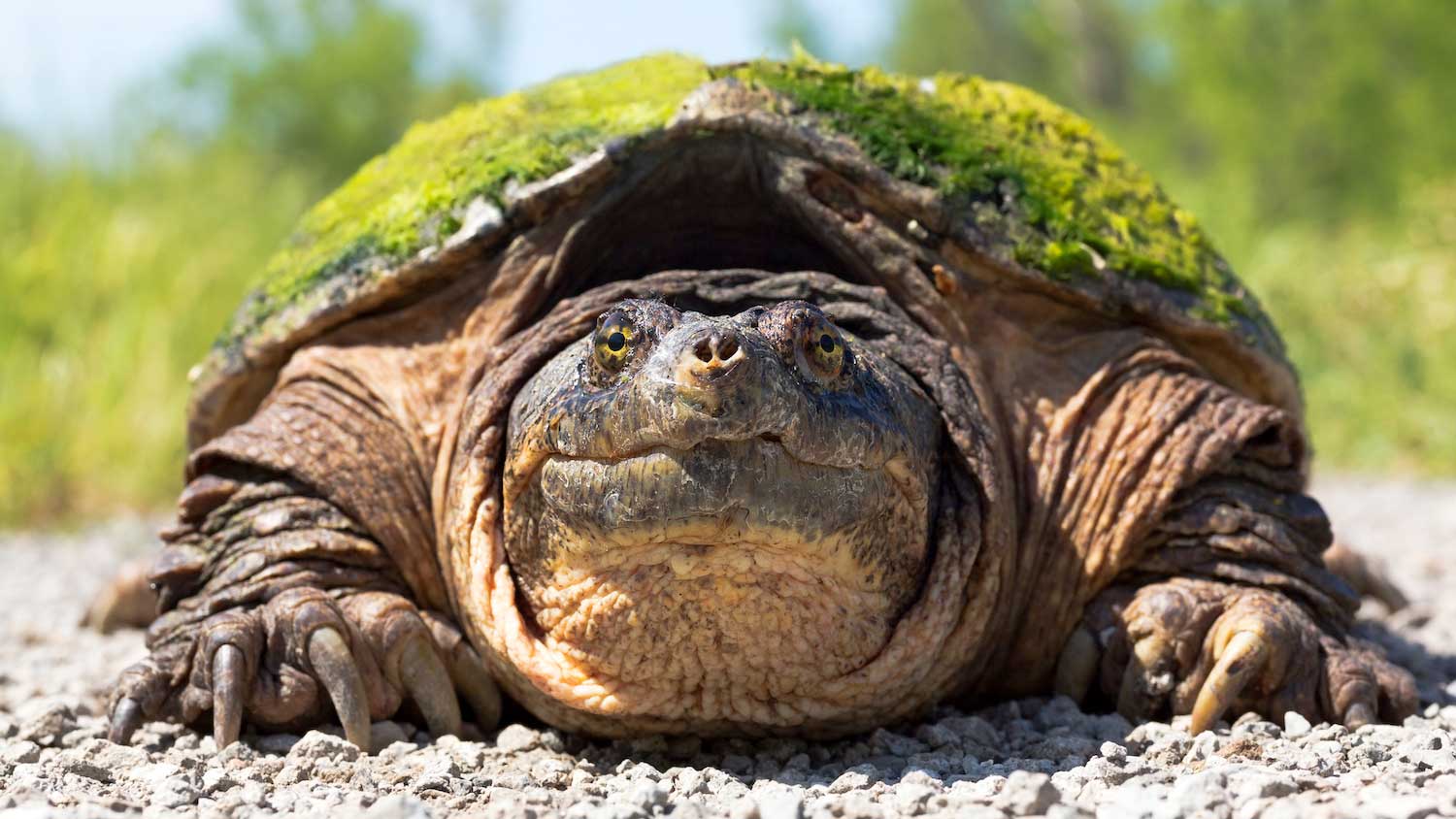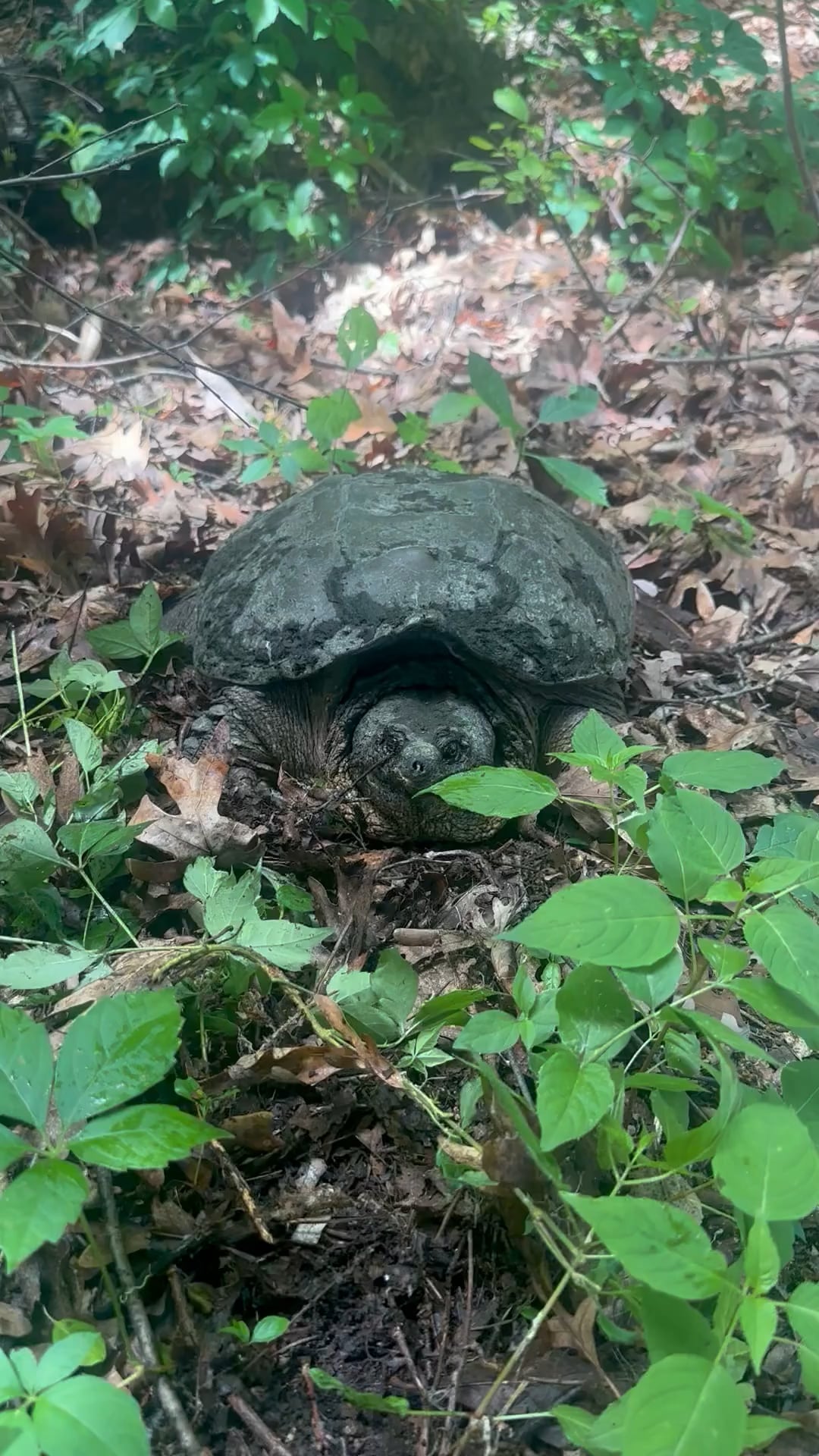Snapping turtles are aggressive due to their protective nature and territorial behavior, especially during mating season. Their aggression is a defense mechanism against potential threats to their safety and nesting sites.
These ancient reptiles have a reputation for being feisty and quick to defend themselves, making them formidable creatures in the wild. Understanding the reasons behind their aggressive behavior can help us coexist with these fascinating reptiles and appreciate their role in maintaining ecological balance.
We will explore the factors that contribute to snapping turtles’ aggressive tendencies and how we can interact with them safely in their natural habitat.

Credit: www.democratandchronicle.com
The Behavior Of Snapping Turtles
Habitat And Characteristics
Snapping turtles are primarily aquatic reptiles found in freshwater habitats.
They have a distinctive shell, powerful jaws, and a long tail, making them easily recognizable.
These turtles can be found in lakes, ponds, rivers, and marshes across North America.
Feeding And Hunting Behavior
- Snapping turtles are opportunistic feeders, consuming both plant matter and various aquatic animals.
- They use their sharp beak-like jaws to catch prey such as fish, insects, amphibians, and even small mammals.
- These turtles are known for their aggressive hunting behavior, swiftly capturing their prey.
Factors Contributing To Aggression
Protecting Territory And Nesting Sites
Snapping turtles are known for their aggressive behavior when it comes to protecting their territory and nesting sites. They fiercely defend their preferred habitats, especially during the breeding season, and can become highly territorial. This behavior is primarily driven by the need to ensure the safety and survival of their offspring, making them fiercely protective of their nesting areas.
Defense Mechanisms And Predatory Nature
Additionally, snapping turtles exhibit aggression as a result of their innate defense mechanisms and predatory nature. They rely on their aggressive behavior as a means of fending off potential threats and predators. Due to their relatively slow movements, snapping turtles have evolved to rely on their aggressive demeanor as a means of survival, allowing them to deter potential threats and maintain their position as apex predators in their natural habitats.
Interactions With Humans
Snapping turtles are known for their aggressive behavior and powerful bite. When it comes to interactions with humans, it’s important to understand how to handle them safely to avoid injury to both the turtle and the person.
Encounters In The Wild
Snapping turtles are commonly found in freshwater habitats such as rivers, ponds, and marshes. If you encounter a snapping turtle in the wild, it’s important to keep a safe distance. Do not attempt to touch or handle the turtle as it may perceive you as a threat and become aggressive.
If a snapping turtle feels threatened, it may hiss, lunge, or snap its jaws in an attempt to defend itself. It’s important to respect the turtle’s space and avoid provoking it.
Handling And Safety Precautions
If you need to handle a snapping turtle, it’s important to take proper safety precautions to avoid injury. Here are some tips:
- Wear protective gloves to avoid getting bitten.
- Grasp the turtle firmly but gently on both sides of the shell.
- Do not lift the turtle by its tail as this can injure the turtle’s spine.
- Keep the turtle away from your face and body.
- Release the turtle back into the water as soon as possible.
It’s also important to note that snapping turtles can carry salmonella, so it’s important to wash your hands thoroughly after handling one.
Overall, interactions with snapping turtles can be safely managed by respecting the turtle’s space and taking proper safety precautions when handling them. By doing so, we can coexist peacefully with these fascinating creatures in their natural habitats.

Credit: www.facebook.com
Conservation And Protection
Conservation and protection of snapping turtles are crucial to ensure the survival of these fascinating creatures. Understanding the factors that contribute to their aggression is essential in implementing effective conservation efforts. By addressing the threats they face and the impact of conservation measures on their behavior, we can work towards preserving these important members of our ecosystem.
Threats To Snapping Turtles
Snapping turtles face several threats that can impact their behavior, leading to increased aggression. Habitat loss, pollution, and human activities such as hunting and road mortality are major threats to their survival. These factors can disrupt their natural behaviors and lead to defensive or aggressive responses when they feel threatened.
Conservation Efforts And Impact On Aggression
Conservation efforts play a pivotal role in mitigating the aggression of snapping turtles. Protecting their natural habitats, implementing measures to reduce pollution, and raising awareness about the importance of these creatures can help alleviate the stress they face. By minimizing human-induced disturbances and creating safe environments, conservation initiatives can positively influence the behavior of snapping turtles, reducing their aggressive tendencies.

Credit: www.reconnectwithnature.org
Conclusion
Snapping Turtles exhibit aggression due to their defensive nature and territorial instincts. Understanding their behavior is crucial for coexisting with these fascinating creatures. By respecting their space and habitat, we can appreciate their role in the ecosystem while ensuring our safety.
Stay informed and enjoy nature responsibly.






Leave a Reply